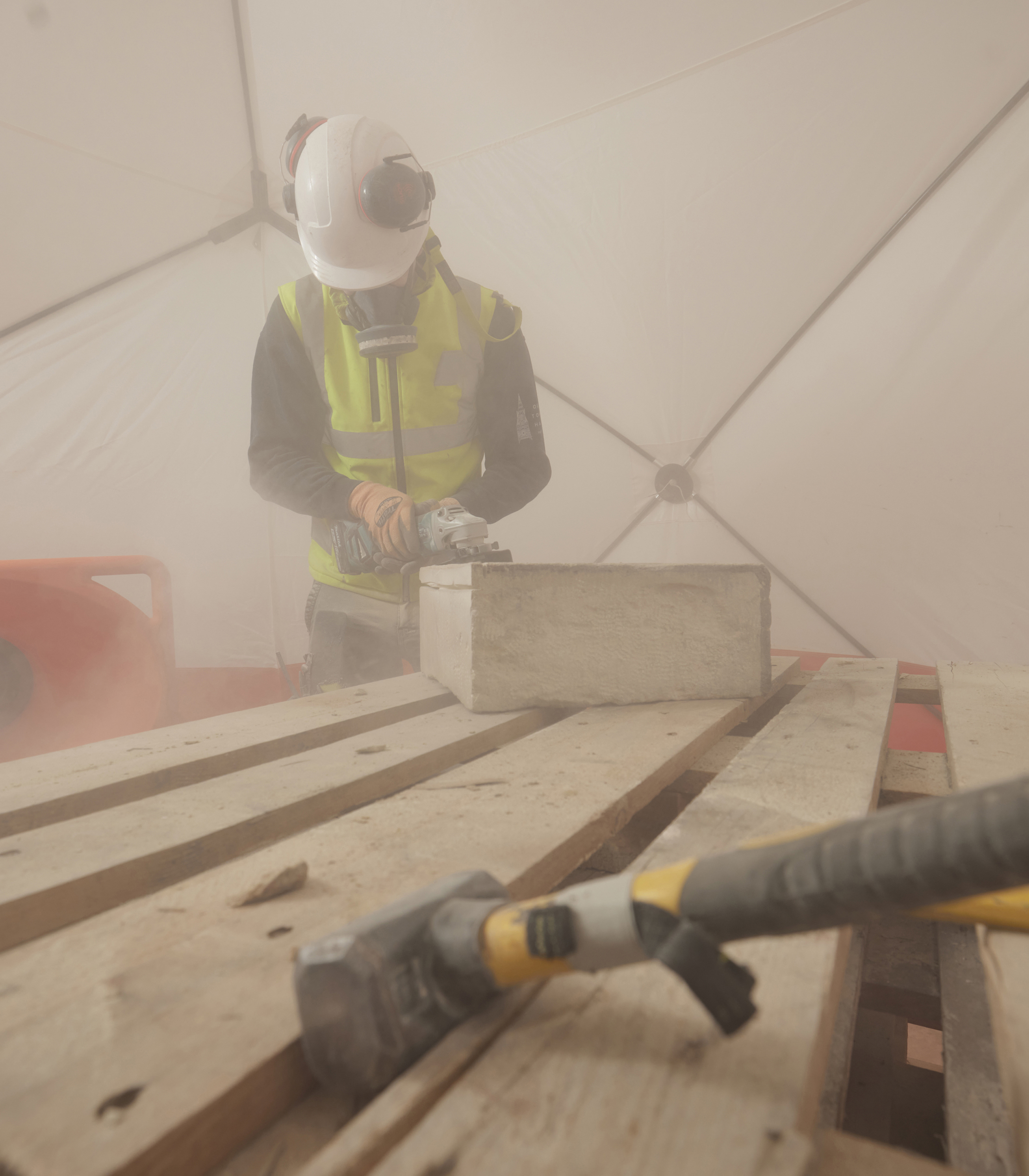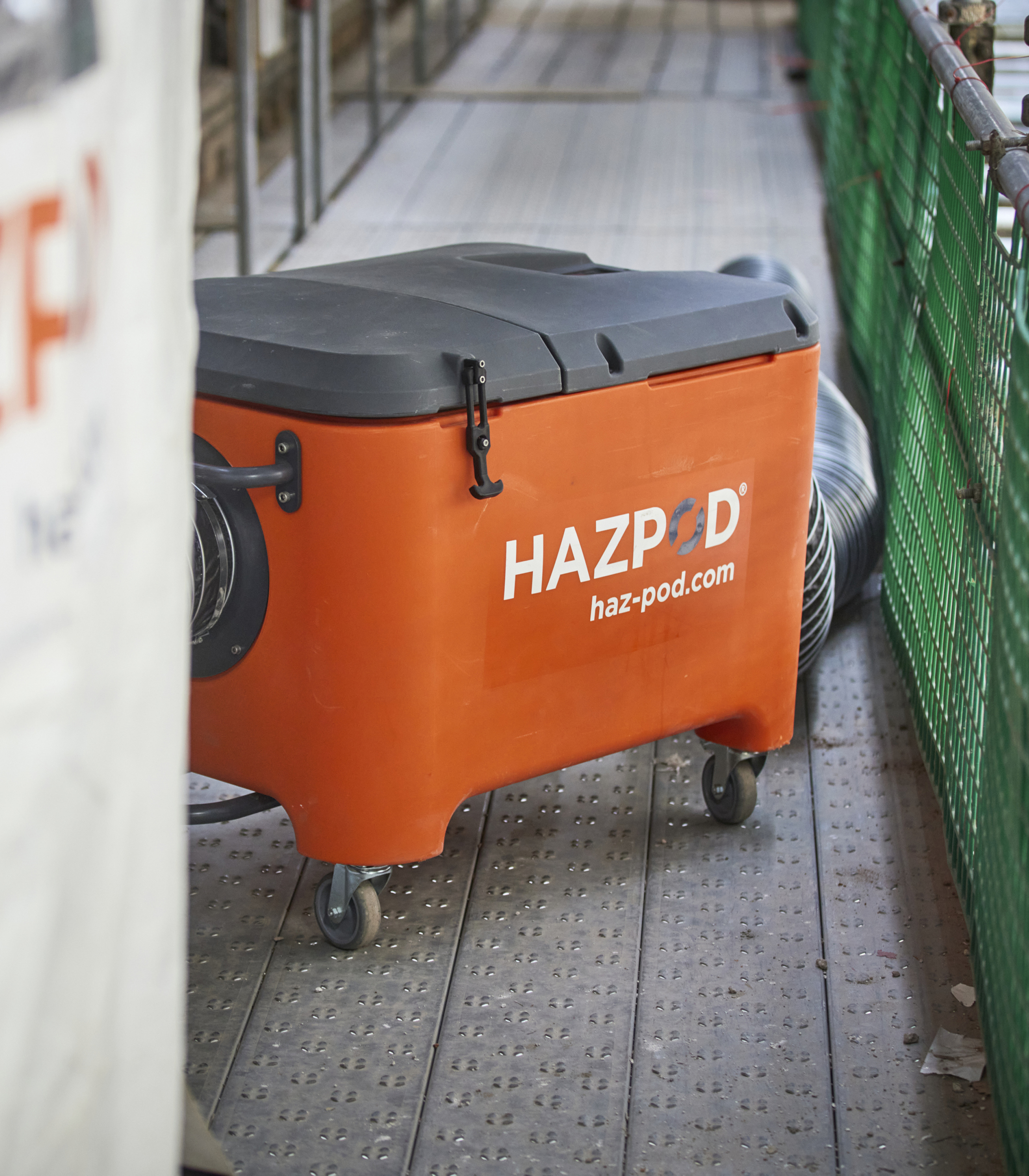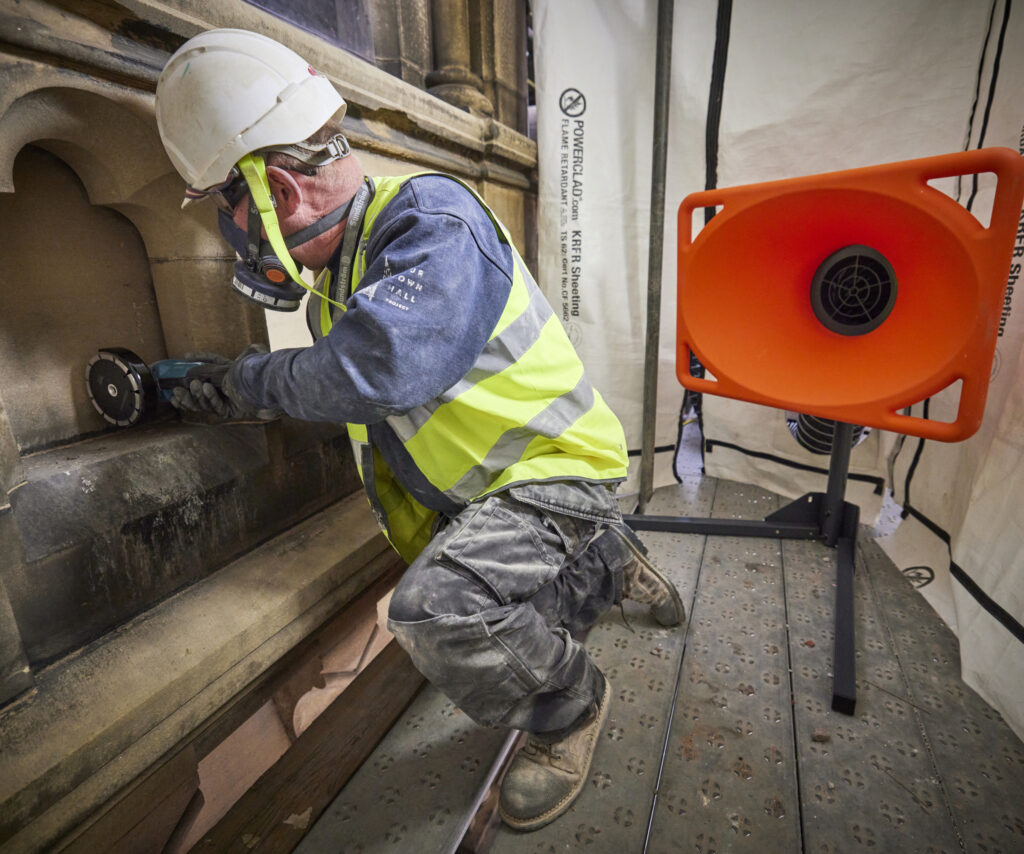CONSTRUCTION DUSTS
Silica is a natural substance in sandstone, bricks, tiles, concrete and mortar. This means that a significant amount of silica dust is generated during everyday on-site activities. These include tile and stone cutting, sanding, drilling and wall chasing.
When dust is generated from these materials most of this dust is fine enough to enter our respiratory system. These fine particles are too small to see, and they’re commonly known as respirable crystalline silica (RCS).
RCS can seriously damage the health of construction workers. Not only can it lead to chronic and life-threatening conditions, but according to HSE, over 500 construction workers die from exposure to silica dust every year. In its respirable form, silica is the main risk to construction workers after asbestos.
INDUSTRIAL FUMES AND VAPOURS
Common thermal or chemical processes including paint stripping, batch mixing applications including solvents, adhesives, etc and welding create hazardous fumes and vapours. As with dust, if inhaled or absorbed by the skin, these can be a health hazard with similar consequences to dust, including chronic and acute respiratory conditions, heart disease and cancer.
To ensure that we can continue our activities in a safe environment, it is essential to capture and remove these fumes at source whilst increasing ventilation to improve the air quality in the workspace.
HAZPOD REDUCES THE RISK OF OCCUPATIONAL LUNG DISEASE
The cancer burden study estimates that there are over 600 lung cancer deaths associated with RCS each year and 450 of those deaths have been directly linked to the construction sector. Silica exposure has also been linked to renal and autoimmune disease.
The Control of Substances Hazardous to Health Regulations 2002 states the limit of dust that people can safely be exposed to. This is referred to as a workplace exposure limit (WEL).
The image below shows the maximum amount of silica you can breathe in during a working day.
This is a tiny amount and failing to install adequate dust controls will leave workers exposed to health problems. The contractor could also face prosecution if they fail to comply with HSE regulations.

HAZPOD was been borne out of the absolute necessity for a robust, reliable and efficient dust extraction and filtration unit – that can be easily transported around the workplace by a single operator – whilst still effectively reducing the risk of silica dust exposure to all of those working on site

GET IN TOUCH TODAY
Please complete the form below and we’ll get back to you within 24 hours.
